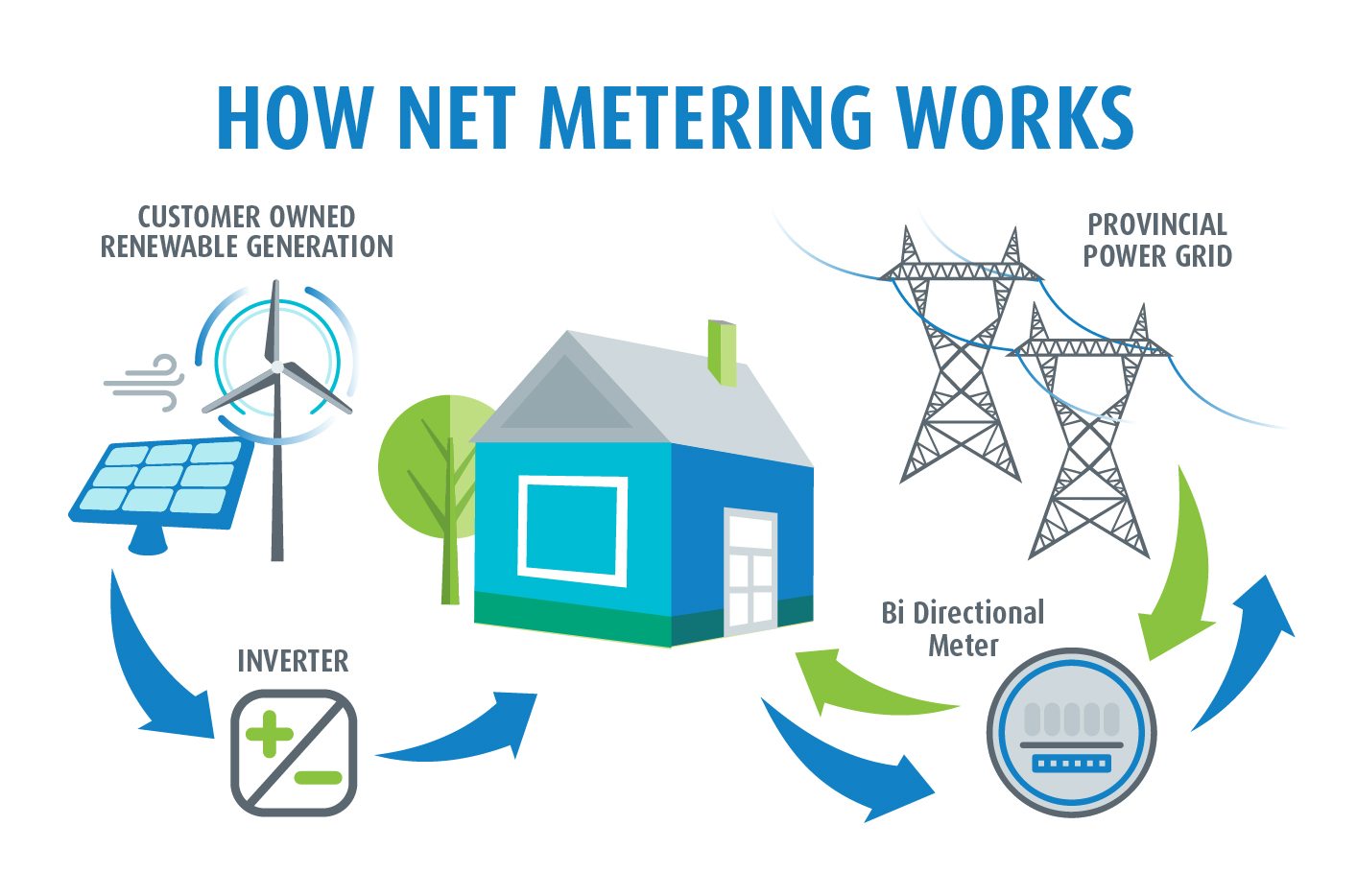Under the net metering system, the electricity meter operates in both directions. The consumers make the first use of electricity produced by the solar rooftop plant and surplus, if any is fed into the grid. If required, consumers can also Import from the grid. The net meter will measure both electricity exported and imported by the system. At the end of the billing period, the net power consumed or sold is calculated. If the net energy is positive (i.e., import is higher than the export) the consumer will pay the discom for the net units as per the tariff band. If it is negative, the discom may pay the customer or adjust during the next billing period.
Most net metering laws involve monthly rollover of kWh credits. Net metering uses the single, and bi-directional meters and can measure the current flowing in both the directions.
When your solar rooftop generates more electricity than you consume during daylight hours. So, with net metering, the homeowner is only billed for the difference between the energy produced by the solar power system and the energy consumed by the house over the monthly billing period. Excess energy earns revenue while the shortage of energy is covered by the grid.
For example, you have a grid-tied solar rooftop system which produces 500 units of electricity every month, and you use 600 units from the grid. So, with the net metering system, distribution companies will charge you for (600 – 500) 100 units with rates set by regulatory bodies. Average rate around the country is Rs10/unit. So, your monthly bill would be 10 X 100 =Rs1000.
And if you produce 500 units of electricity every month, and use only 400 units, you will be billed for 0 units and excess 100 units of energy produced by your system will be credit to the next month.
In a solar rooftop system, you use electricity which is smart and free and with the complimentary net-metering arrangement, you become immune against any high rising utility bills. This makes worried free about your electricity bills.

